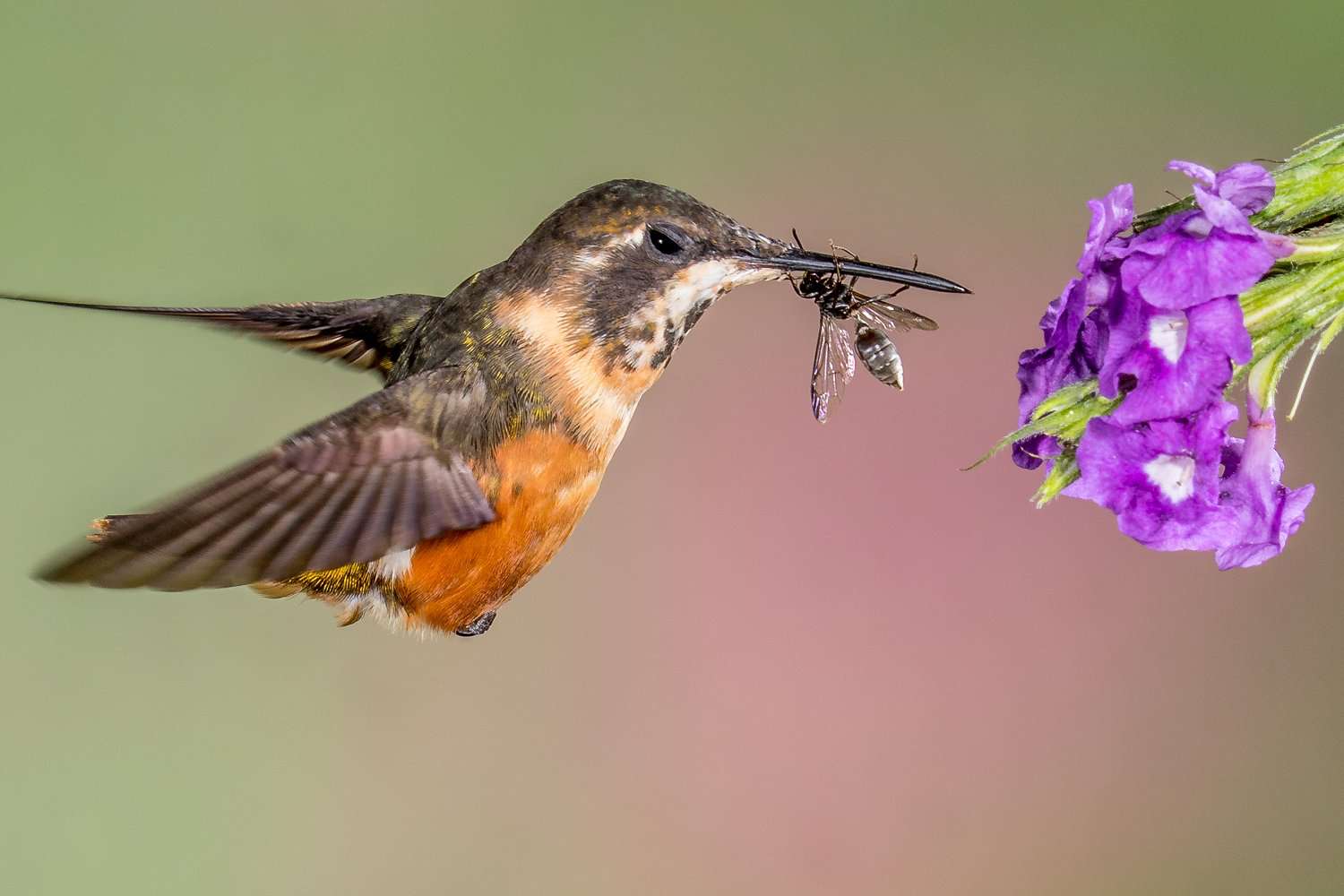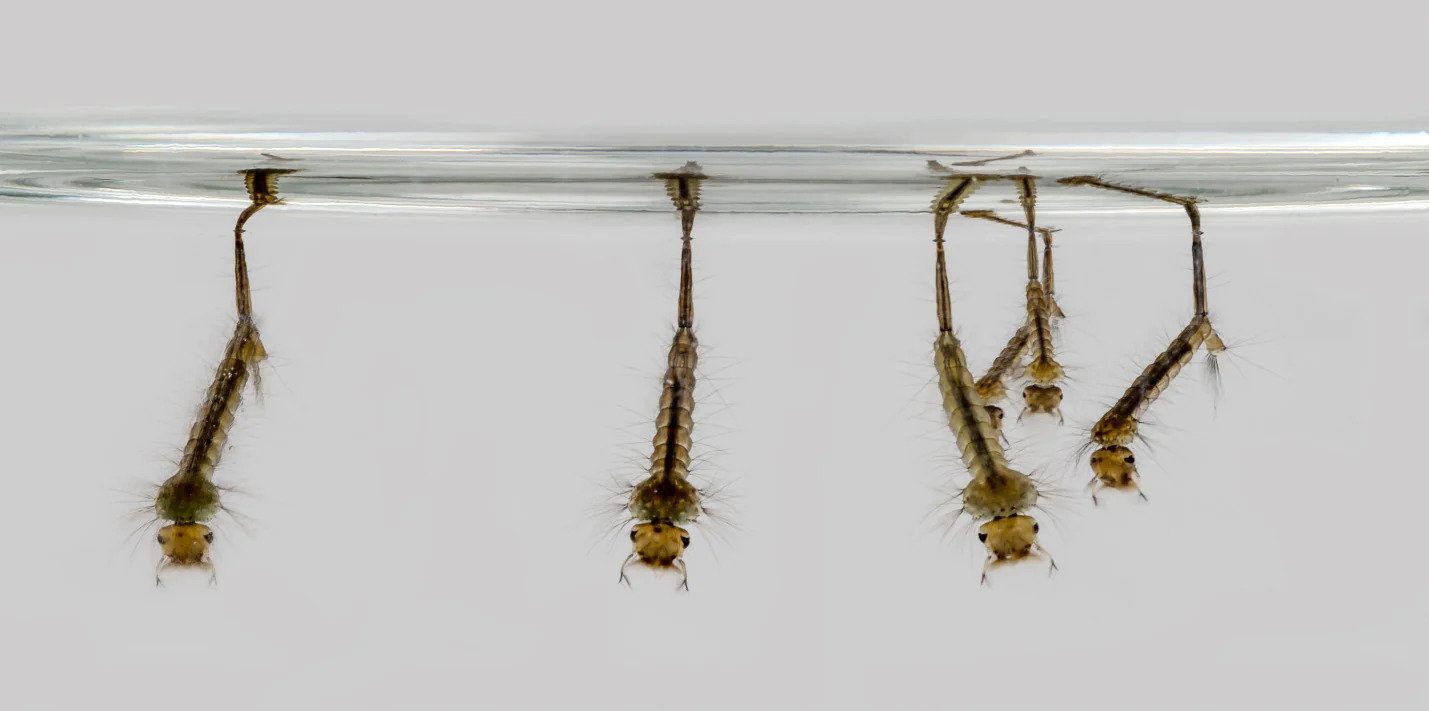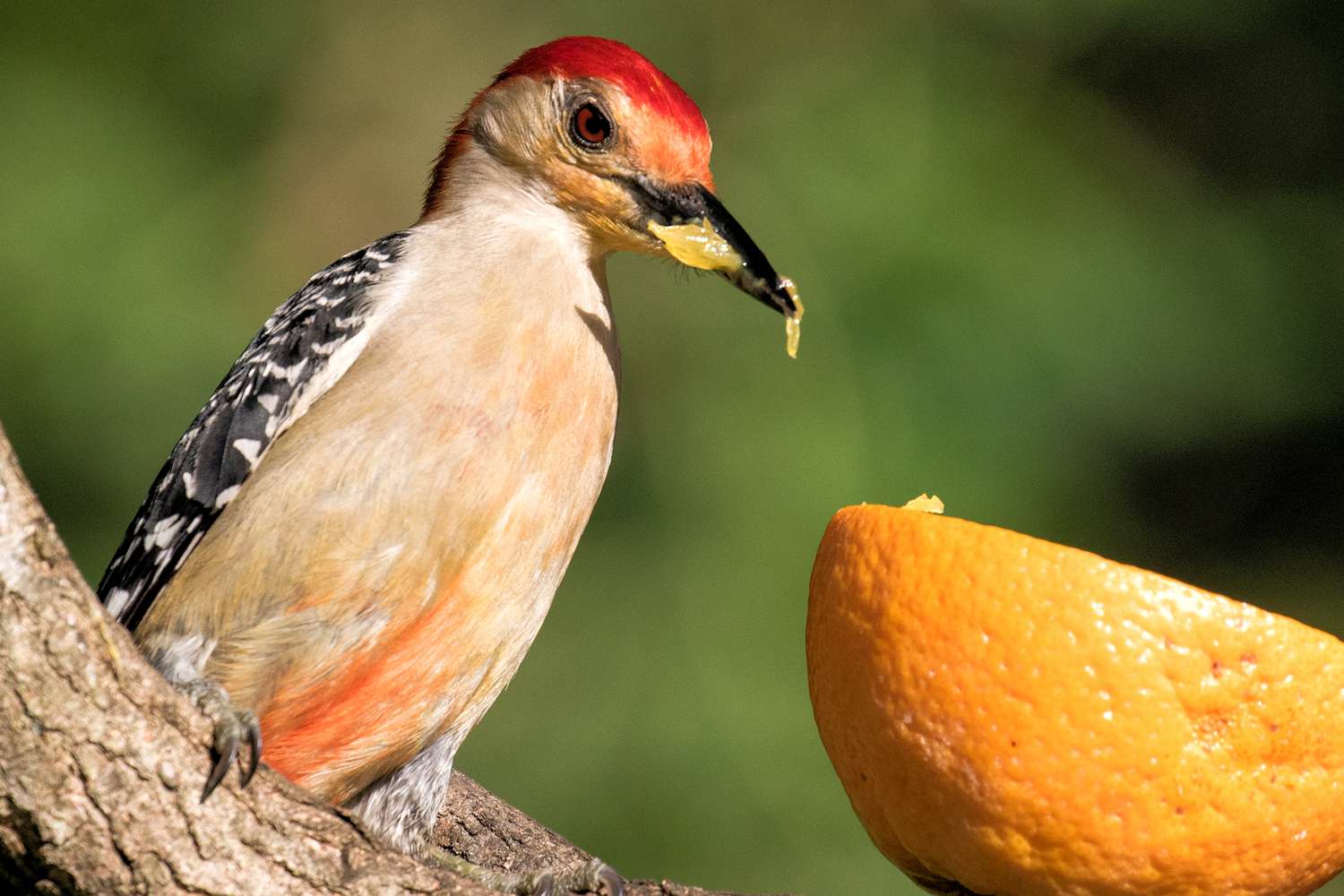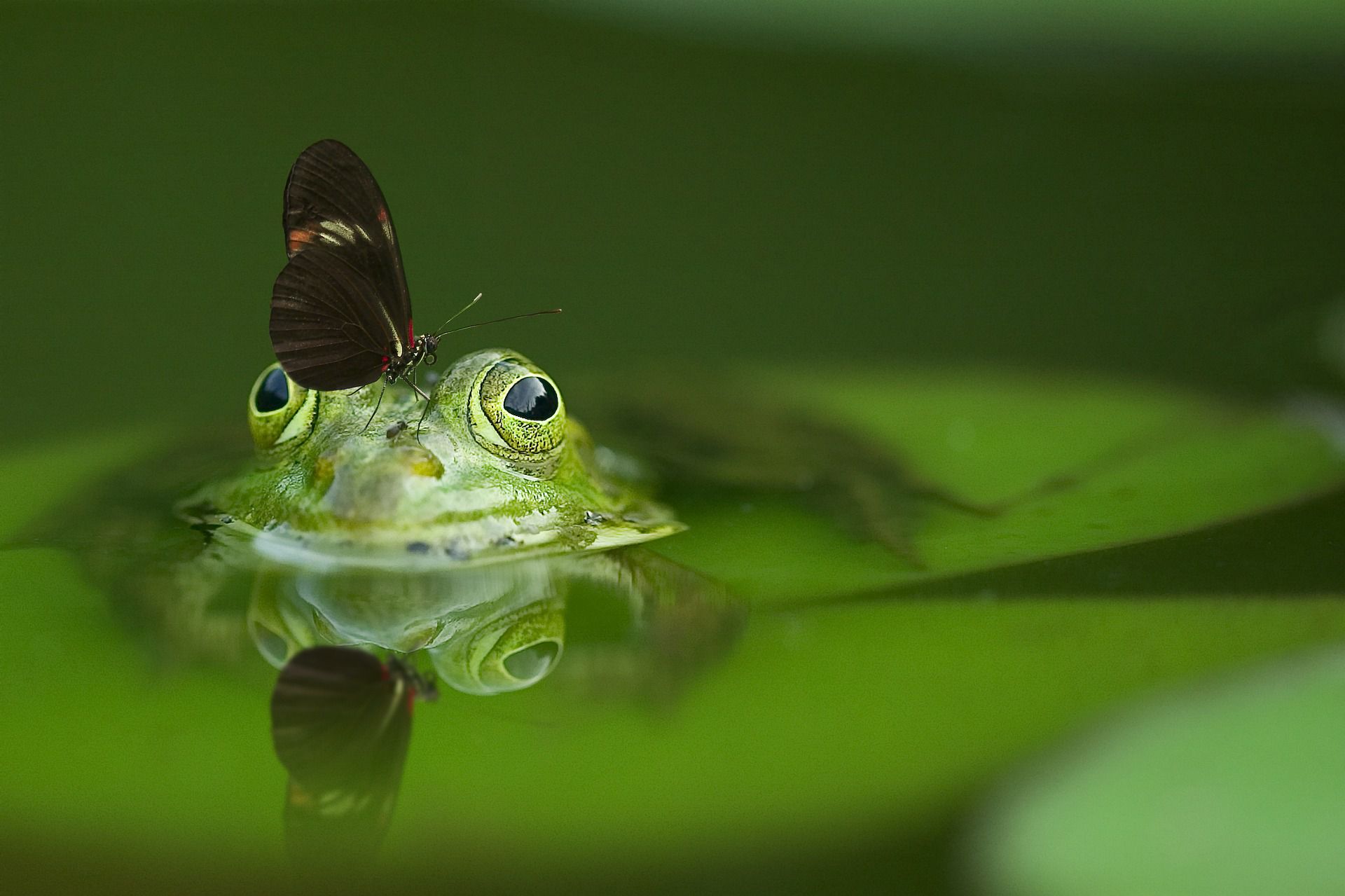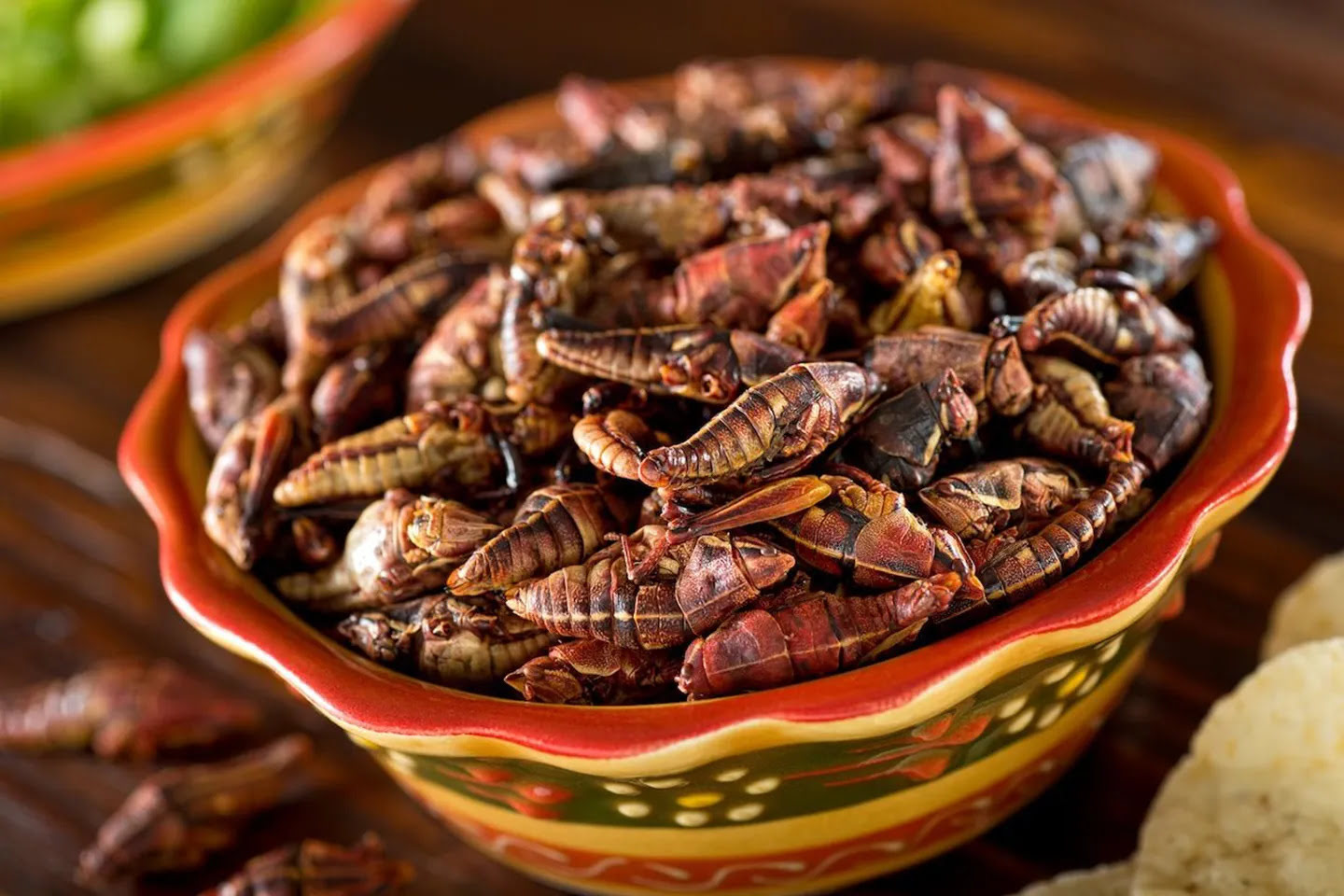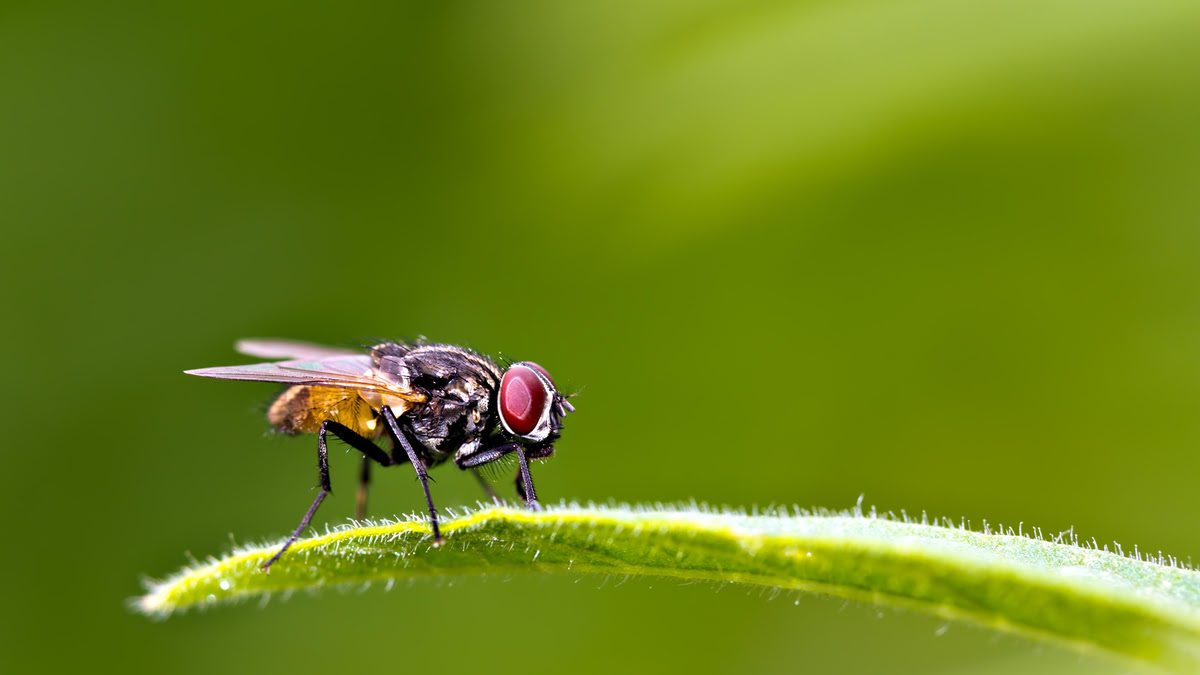Home>Gardening News and Trends>Latest News>What Insects Do Flies Eat


Latest News
What Insects Do Flies Eat
Modified: January 22, 2024
Stay updated with our latest news on what insects flies eat. Find out their dietary preferences and habits, and how it affects our environment.
(Many of the links in this article redirect to a specific reviewed product. Your purchase of these products through affiliate links helps to generate commission for Chicagolandgardening.com, at no extra cost. Learn more)
Table of Contents
Introduction
Flies are pesky insects that seem to always make an appearance, buzzing around us and constantly testing our patience. But have you ever wondered what flies eat? These tiny creatures may seem insignificant, but their diet plays a crucial role in the ecosystem. From decomposing matter to unexpected sources, flies have a diverse palate that keeps them both annoying and fascinating.
When we think of flies, we often conjure up images of them hovering around garbage and waste. While this is certainly true to some extent, flies have a much wider range of dietary preferences. They are opportunistic feeders, meaning they will consume almost anything that is easily accessible.
In this article, we will explore the intriguing world of a fly’s diet, shedding light on the various food sources they rely on for survival. From decomposing organic matter to nectar and even blood, flies have adapted to utilize a wide range of resources to fulfill their nutritional needs. By understanding what flies eat, we can not only gain a deeper appreciation for these insects, but also find ways to manage and control them.
So, let’s dive in and uncover the surprising world of a fly’s diet.
Anatomy of a Fly
Before we delve into the intricacies of a fly’s diet, let’s take a moment to understand the remarkable anatomy of these tiny creatures. Flies belong to the order Diptera, which means “two wings” in Greek, referring to their unique feature of having only two functional wings. Their bodies are divided into three main parts: the head, thorax, and abdomen.
The head of a fly houses a pair of compound eyes, which consist of thousands of individual lenses that grant them exceptional vision. This enables flies to quickly locate potential food sources and evade predators. They also possess antennae that help them sense their environment and detect chemical signals, including the scent of food.
Moving down to the thorax, flies have a powerful set of wings that allow them to maneuver swiftly through the air. These wings beat at an astonishing rate of up to 200 times per second, enabling flies to hover, change direction, and dart away in an instant.
The abdomen of a fly contains vital organs, including the digestive system. Flies have a specialized mouthpart called a proboscis that resembles a straw. This proboscis allows them to suck up liquids, such as nectar or fluids from decomposing matter. Additionally, flies have taste receptors on their feet, allowing them to taste food by walking on it.
Understanding the anatomy of a fly helps us comprehend how they interact with their environment and seek out food sources. Now, let’s explore the intriguing diet of flies and discover what sustains these small but resilient insects.
Diet of Flies
Flies are incredibly adaptable when it comes to their diet, making them successful scavengers and opportunistic feeders. Their food sources can vary depending on the species and their environment, but there are several common categories that make up a fly’s diet.
One of the primary food sources for flies is decomposing organic matter. Whether it’s rotting fruit, dead animals, or decaying plant material, flies play a crucial role in breaking down and recycling these organic substances. They are attracted to the strong odors emitted by decomposing matter, using their sense of smell to locate potential food sources.
In addition to decomposing matter, flies are also drawn to the sweet nectar and pollen of flowers. They play a significant role in pollination, transferring pollen from one plant to another as they feed. This mutually beneficial relationship allows both flies and plants to thrive.
Fruits and vegetables are also part of a fly’s diet. Flies are notorious pests in orchards and gardens as they are attracted to the sugars present in ripening fruits and vegetables. They puncture the skin of these fruits to access the sugary juices, often leaving behind bacterial contaminants in the process.
Animal waste, such as feces or carcasses, is another food source for flies. Their ability to break down and recycle organic matter makes them important contributors to the natural decay process. While this may seem unsightly and unpleasant to us, the presence of flies helps maintain the ecological balance.
A lesser-known aspect of a fly’s diet is their preference for blood and bodily fluids. Certain species, such as blood-sucking flies, specifically seek out warm-blooded animals to feed on. They use their mouthparts to pierce the skin and consume the blood, sometimes carrying disease-causing pathogens in the process.
Interestingly, flies are not just passive consumers but can also be sneaky predators. Some fly species have adapted to capture and feed on other insects. They may trap their prey using sticky hairs or employ other specialized hunting techniques.
In summary, flies have a diverse diet that includes decomposing matter, nectar and pollen, fruits and vegetables, animal waste, blood, and in some cases, other insects. This flexibility allows them to thrive in various environments and fulfill their ecological role.
Decomposing Matter
One of the primary food sources for flies is decomposing matter. Flies are attracted to the strong odors emitted by rotting organic material, which acts as a signal for a potential food source. This includes a wide range of substances such as rotting fruits, vegetables, carcasses, and even decaying plant matter.
When a fruit or vegetable starts to decompose, it releases various chemical compounds and gases. Flies have an extraordinary sense of smell and are highly sensitive to these odors. They can detect them from a considerable distance and quickly home in on the source.
Flies play a vital role in the ecosystem by consuming decomposing matter. As scavengers, they aid in breaking down organic material and accelerating the process of decay. By feeding on decomposing matter, flies help to recycle nutrients back into the environment.
During the feeding process, flies regurgitate digestive enzymes onto the food, which starts the breakdown and liquefaction of the matter. They then suck up the resulting liquid, which contains the essential nutrients they need for survival.
This ability to consume rotting substances enables flies to flourish in environments where other organisms might struggle. They can feed on a wide variety of decomposing matter, ranging from fallen fruits in orchards to animal carcasses in the wild.
While flies serve a crucial role in decomposition, their presence around decaying matter can also be a nuisance and a potential health risk. The bacteria and pathogens that may be present in decomposing matter can cling to the fly’s body and be easily transferred to other surfaces.
To mitigate the negative impact of flies around decomposing matter, proper waste management and hygiene practices are essential. Ensuring that garbage is properly sealed, compost piles are well-maintained, and animal waste is promptly cleaned up can help reduce the attraction for flies and minimize the potential spread of diseases.
Overall, flies are nature’s efficient recyclers, playing a vital role in breaking down and consuming decomposing matter. While their presence may be bothersome, it’s important to recognize and appreciate the important role they play in maintaining the natural balance of ecosystems.
Nectar and Pollen
While flies are often associated with nuisance and filth, they also have a sweet side – quite literally. Flies are attracted to the vibrant colors and sweet nectar of flowers, making them important pollinators in many ecosystems.
As flies search for food, they are drawn to the fragrant scents emitted by flowers. Their keen sense of smell allows them to locate plants that are producing nectar. Once they find a suitable flower, they land and use their mouthparts to feed on the nectar present in the flower’s blossoms.
While feeding, flies inadvertently pick up pollen grains on their bodies. As they move from flower to flower, these pollen grains are transferred, allowing for cross-pollination between plants. This process is essential for the reproduction of many plant species, enabling genetic diversity and the production of seeds and fruits.
Unlike bees, flies do not have specialized structures for carrying pollen, such as pollen sacs or hairy bodies. However, their constant movement between flowers as they search for nectar makes them effective pollinators in certain environments.
Flies are particularly attracted to flowers that have a strong odor or produce dark-colored or rotting fruits. These types of flowers often attract flies and other insects that serve as pollinators. Examples of flowers that rely on flies for pollination include some species of wild orchids and certain types of carrion flowers.
Flies’ preference for nectar and pollen contributes to the overall health and diversity of ecosystems. By visiting multiple flowers, they aid in the fertilization of plants, ensuring the production of seeds and the continuation of plant species.
While flies may not be as renowned or celebrated as honey bees when it comes to pollination, they play a significant role in specific ecosystems, especially in situations where other pollinators might be less effective.
So, the next time you see a fly buzzing around a flower, remember that it’s not just there to annoy you – it’s performing an important ecological task as a pollinator.
Fruits and Vegetables
When we think of pests damaging our fruits and vegetables, flies may not be the first insect that comes to mind. However, flies, especially fruit flies, are notorious for their affinity for ripe and decaying fruits and vegetables.
Flies are naturally attracted to the sugars present in fruits and vegetables. As these organic materials ripen and produce a distinct aroma, they become more enticing to flies. The scent acts as a signal, drawing flies to the potential food source.
Upon finding a suitable fruit or vegetable, flies use their specialized mouthparts, known as a proboscis, to puncture the skin and access the juices inside. They then consume the sweet liquid, which provides them with essential nutrients.
Fruit flies, in particular, are known for their ability to multiply rapidly, making them a common nuisance in kitchens, grocery stores, and fruit markets. They lay their eggs on the surface of fruits and vegetables, and when the larvae hatch, they feed on the fermenting flesh.
While flies serve as efficient decomposers in nature, their presence can lead to spoilage and contamination of fruits and vegetables. When flies puncture the skin of the produce, they create openings that allow bacteria and fungi to enter, accelerating the spoilage process.
To minimize the impact of flies on fruits and vegetables, proper storage and hygiene practices are essential. Storing ripe fruits in sealed containers, refrigerating produce, and promptly disposing of any decaying or infested items can help reduce the attraction for flies.
Additionally, fly traps and insecticides can be employed to control fly populations and protect fruits and vegetables. However, it is important to choose environmentally friendly and food-safe options when implementing pest control measures.
Ultimately, while flies may present challenges when it comes to preserving the quality of fruits and vegetables, it is essential to maintain a balance that allows these insects to carry out their ecological roles as decomposers. Their role in breaking down organic matter is crucial for nutrient recycling in the environment.
So, next time you find a small fly hovering around your ripe fruit, remember that it is just following its natural instincts, albeit in a way that can be frustrating for us as food consumers.
Animal Waste
When it comes to finding a meal, flies aren’t deterred by even the most unpleasant sources. Animal waste, including feces and carcasses, is a common and significant food source for many fly species.
Flies are naturally attracted to the organic matter found in animal waste due to its high nutrient content. The waste provides flies with essential proteins and other nutrients necessary for their survival and reproduction. They are particularly drawn to the strong odors emitted by the decomposing waste.
Flies play a crucial role in the decomposition process of animal waste. As scavengers, they help break down the waste and accelerate its natural decay. By doing so, they assist in returning nutrients back into the environment.
Flies have the unique ability to both consume and lay eggs on animal waste. Female flies deposit their eggs in the waste, ensuring a future generation of larvae that will feed on the decaying matter.
As the larvae hatch, they begin to consume the waste, breaking it down further and facilitating the nutrient recycling process. This rapid consumption of organic matter by fly larvae helps reduce the time it takes for the waste to decompose naturally.
While flies perform an important role in the degradation of animal waste, their presence around such waste can pose potential health risks. Flies can pick up bacteria and pathogens from the waste and transfer them to other surfaces, including food or food preparation areas.
Effective waste management, proper sanitation, and maintaining clean animal enclosures are essential for minimizing the presence of flies around animal waste. Regular waste removal, proper waste disposal, and cleaning practices can help mitigate the attraction of flies and reduce the spread of potential diseases.
Despite the inherent nuisance and potential health hazards associated with flies and animal waste, it is important to remember their ecological significance. Flies contribute to the natural breakdown of organic matter, returning nutrients to the environment and playing a vital role in maintaining the balance of ecosystems.
So, while we may find flies buzzing around animal waste unpleasant, it is a reminder of their vital ecological role as nature’s waste managers.
Blood and Bodily Fluids
While flies are often associated with feeding on decaying matter, some species have developed a taste for blood and other bodily fluids. These flies, known as hematophagous flies, are specialized feeders that seek out warm-blooded animals to fulfill their dietary needs.
One well-known example of a hematophagous fly is the common mosquito. Female mosquitoes require blood meals to obtain the necessary proteins for egg development. They use their needle-like mouthparts, known as a proboscis, to pierce the skin and feed on the blood.
Other flies, such as certain species of horse flies, deer flies, and tsetse flies, also exhibit blood-feeding behaviors. They are attracted to the carbon dioxide and heat emitted by their warm-blooded hosts, using these cues to locate and feed on their preferred victims.
Flies that feed on blood have specialized mouthparts that allow for efficient blood extraction. They possess cutting mouthparts that make a small incision in the skin, allowing them to access the blood vessels beneath. These flies also inject saliva while feeding, which contains anticoagulant compounds to prevent blood clotting.
While most hematophagous flies target animal hosts, some species can also bite humans. These bites can cause irritation, itching, and, in some cases, transmit diseases. It is important to take appropriate measures to protect against these biting flies, such as wearing protective clothing and using insect repellents when in areas where they are prevalent.
It is worth noting that not all flies that feed on blood exclusively rely on warm-blooded hosts. Some species, like the stable fly, are able to puncture the skin of both humans and animals and feed on the blood that collects around wounds or open wounds.
Although flies that feed on blood may be regarded as pests due to their feeding behaviors and potential for disease transmission, it is crucial to understand their ecological role. These flies serve as a food source for other organisms, such as birds, bats, and spiders, contributing to the balance of ecosystems.
By feeding on blood and other bodily fluids, these specialized flies have found a niche in the natural world. While their feeding habits may be unsettling, they are a testament to the wide range of dietary preferences and adaptations that exist within the fly species.
Sneaky Predators
Flies are not just passive consumers of decaying matter and blood; some species have evolved to become sneaky predators in their own right. These predatory flies employ various strategies and adaptations to capture and feed on other insects, showcasing their versatility and resourcefulness.
One example of a predatory fly is the robber fly. Robber flies are agile hunters that lie in wait for their prey, often perched on plants or other surfaces. With their excellent vision and quick reflexes, they ambush unsuspecting insects, including flies, bees, wasps, and even dragonflies, in mid-flight.
Using their strong legs, robber flies snatch their prey out of the air, immobilizing them with a venomous bite. After subduing their victim, they inject digestive enzymes into the body to break it down and consume the liquefied contents.
Another example of a predatory fly is the hoverfly. Hoverfly larvae, often known as rat-tailed maggots, live in aquatic or semi-aquatic environments and are voracious predators of other invertebrates, such as mosquito larvae.
Hoverflies are known for their mimicry abilities, often resembling bees or wasps in appearance. This mimicry acts as a defense mechanism, deterring potential predators from attacking them while also fooling unsuspecting prey.
Aside from robber flies and hoverflies, there are other fly species that employ ambush hunting techniques or parasitic behavior to capture their prey. Some flies lay their eggs on or near other insects, and when the larvae hatch, they feed on the host, ultimately leading to its demise.
These sneaky predatorial behaviors demonstrate the adaptability and resourcefulness of flies as they have found alternative food sources and hunting strategies. While they are often overshadowed by larger predators, flies play a significant role in controlling insect populations and maintaining ecological balance.
It’s important to remember that not all flies are pests or carriers of disease. Some, like these predatory species, contribute positively to the environment by preying on other insects that may cause harm or disrupt ecosystems.
So, the next time you encounter a fly, take a moment to appreciate its potential predatory nature and the role it plays in the delicate web of life around us.
Conclusion
Flies may be small and often irritating, but their diets are surprisingly diverse and fascinating. These resilient insects have adapted to consume a wide range of food sources, allowing them to thrive in various environments and play important roles within ecosystems.
From their contribution to the decomposition of organic matter to their participation in the pollination process, flies have a significant impact on nutrient cycling and the reproductive success of plants. Their ability to feed on fruits, vegetables, animal waste, blood, and even prey on other insects showcases their adaptability and resourcefulness.
While flies can be seen as pests and carriers of disease, it is important to appreciate their ecological significance. These insects are essential contributors to the natural decay process, helping to recycle nutrients back into the environment.
Understanding the diverse diet of flies can provide valuable insights into managing and controlling their populations when necessary. Implementing proper waste management practices, maintaining hygiene, and employing targeted pest control measures can help mitigate the nuisance and health risks associated with flies.
Next time you encounter a fly buzzing around, take a moment to appreciate the complexities of its diet and the ecological role it plays. These tiny creatures are not just nuisances but integral parts of the intricate web of life that surrounds us.
So, the next time you see a fly, remember that it is more than just a bothersome insect – it is a resilient and adaptable creature, contributing to the balance and health of our ecosystems in surprising ways.
